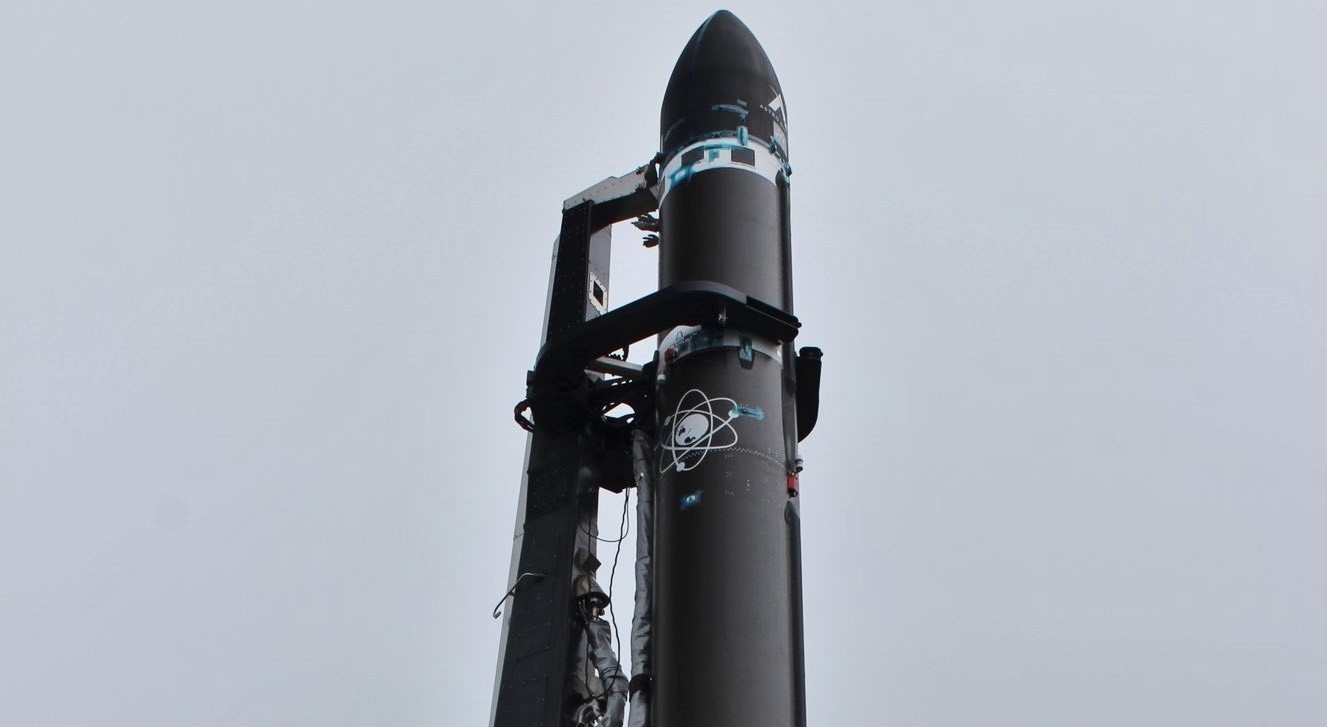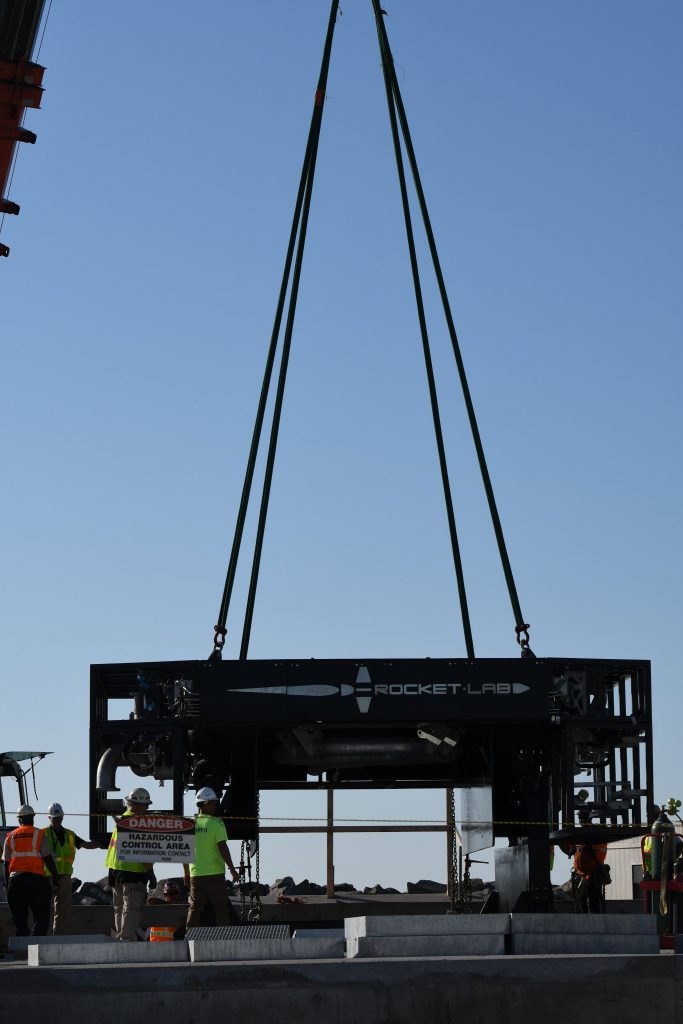

News
Rocket Lab set for Electron’s 9th launch as work continues on reusability, new US launch pad
Over the last several weeks, US spaceflight company Rocket Lab has posted major updates about its ongoing work on LC-2 – the company’s second orbital launch complex – and offered a number of glimpses behind the scenes of preparations for Electron’s 9th orbital launch attempt.
That attempt will be streamed by Rocket Lab and could occur as early as October 17th, delayed from the 15th due to unfavorable weather conditions.
Prior to announcing booster recovery efforts – much like SpaceX and the Falcon 9 – the company broke ground on their first US-based launch facility, to be located at the Mid-Atlantic Regional Spaceport in Wallops Island, Virginia. Launch Complex 2 (LC-2) will join the company’s lone orbital Launch Complex 1 (LC-1) – New Zealand’s first and only orbital launch site – and is meant to enable Rocket Lab to eventually reach a biweekly-to-weekly launch cadence with Electron.
In a statement posted to the company’s social media accounts, Rocket Lab proudly announced that it is working alongside Virginia Space teams to construct LC-2 and its associated Integration and Control Facilities. The future pad recently reached a major milestone as workers installed LC-2’s 66-ton Electron launch platform, to be followed soon after by the installation of the mount’s 44 foot tall (13.4m) strongback, itself weighing 7.6 tons. This marks the beginning of the end of construction efforts at the complex and Rocket Lab is still working towards completion sometime in December 2019. Inaugural pad testing and shakedown operations are expected to begin immediately after, followed by LC-2’s first Electron launch sometime in early 2020.

The US launch facilities will closely resemble Rocket Lab’s New Zealand pad both in appearance and operation: Electron will be rolled horizontally to the launch mount to be lifted vertical after installation on the strongback. A high-pressure water deluge system will protect the mount from Electron and deaden some of the acoustic energy created by the booster.
Mahia Peninsula, New Zealand 2017 (Rocket Lab)
Although Rocket Lab is an American company headquartered in Huntington, CA, it has never launched from the United States. The addition of a second launch complex is expected to drastically increase Electron’s launch cadence, while also lowering the burden placed on companies who would otherwise have to transport spacecraft internationally. In a statement, David Pierce – director of NASA Goddard Space Flight Center’s Wallop Flight Facility – said that “the company’s Electron rocket helps fill a key national need for providing more – and more frequent – launch opportunities for small satellites, and NASA’s Launch Range at GSFC/Wallops, which has enabled commercial space operations for decades, is poised and ready to support these missions.”
Rocket Lab previously worked with NASA to support the Educational Launch of Nanosatellites (ELaNa)-19 mission in December of 2018. So far, Rocket Lab has supported many small companies by launching a total of 39 satellites to orbit. A launch facility located in the US will allow the company to expand its customer base and open up opportunities for more US government launch contracts.
The new US-based launch facility will allow Rocket Lab to expand its employee roster by hiring up to 30 new team members in positions supportive of launch operations including engineering, launch safety, and administration. Launch Complex 2 has been certified to fly Electron up to 12 times a year – specifically supporting government contracts – while Launch Complex 1 in New Zealand has been certified for up to 120 launches per year.
Electron’s 9th launch – nicknamed “As the Crow Flies” – is scheduled for liftoff no earlier than (NET) October 15th and will be a dedicated commercial mission for startup Astro Digital. It will serve as an orbital launch attempt for Astro’s “Corvus” satellite bus and will test the world’s most powerful small electric propulsion system. In a recent blog post, Rocket Lab Senior Vice President of Global Launch Services Lars Hoffman stated that “the mission is a perfect example of the tailored, responsive and precise launch service sought by an increasing number of small satellite operators.”
On October 4th, the 9th flight-qualified Electron rocket completed a routine wet dress rehearsal (WDR) – loading the vehicle with propellant and counting down to launch (sans ignition) – at LC-1. A few days later, Astro Digital’s spacecraft was integrated with a Curie-powered kick stage and encapsulated inside Electron’s carbon fiber payload fairing.
As of now, everything is smoothly on track for Electron’s ninth launch. Of note, the Flight 9 Electron booster is outfitted with a new telemetry system designed to gather a huge amount of data about the reentry environment the booster experiences, data that will be used to reinforce the booster and prepare for its first recovery attempts.
Due to the volume of data that will be produced, Electron will quite literally eject small data capsules that will then be recovered by boat in the Pacific Ocean. If all goes well and the data returned looks promising, Rocket Lab could attempt its first Electron recoveries – nominally grabbing the parasailing booster mid-air with a helicopter – at some point in early 2020.
Check out Teslarati’s newsletters for prompt updates, on-the-ground perspectives, and unique glimpses of SpaceX’s rocket launch and recovery processes.

News
Tesla FSD fleet is nearing 7 billion total miles, including 2.5 billion city miles
As can be seen on Tesla’s official FSD webpage, vehicles equipped with the system have now navigated over 6.99 billion miles.

Tesla’s Full Self-Driving (Supervised) fleet is closing in on almost 7 billion total miles driven, as per data posted by the company on its official FSD webpage.
These figures hint at the massive scale of data fueling Tesla’s rapid FSD improvements, which have been quite notable as of late.
FSD mileage milestones
As can be seen on Tesla’s official FSD webpage, vehicles equipped with the system have now navigated over 6.99 billion miles. Tesla owner and avid FSD tester Whole Mars Catalog also shared a screenshot indicating that from the nearly 7 billion miles traveled by the FSD fleet, more than 2.5 billion miles were driven inside cities.
City miles are particularly valuable for complex urban scenarios like unprotected turns, pedestrian interactions, and traffic lights. This is also the difference-maker for FSD, as only complex solutions, such as Waymo’s self-driving taxis, operate similarly on inner-city streets. And even then, incidents such as the San Francisco blackouts have proven challenging for sensor-rich vehicles like Waymos.
Tesla’s data edge
Tesla has a number of advantages in the autonomous vehicle sector, one of which is the size of its fleet and the number of vehicles training FSD on real-world roads. Tesla’s nearly 7 billion FSD miles then allow the company to roll out updates that make its vehicles behave like they are being driven by experienced drivers, even if they are operating on their own.
So notable are Tesla’s improvements to FSD that NVIDIA Director of Robotics Jim Fan, after experiencing FSD v14, noted that the system is the first AI that passes what he described as a “Physical Turing Test.”
“Despite knowing exactly how robot learning works, I still find it magical watching the steering wheel turn by itself. First it feels surreal, next it becomes routine. Then, like the smartphone, taking it away actively hurts. This is how humanity gets rewired and glued to god-like technologies,” Fan wrote in a post on X.
News
Tesla starts showing how FSD will change lives in Europe
Local officials tested the system on narrow country roads and were impressed by FSD’s smooth, human-like driving, with some calling the service a game-changer for everyday life in areas that are far from urban centers.

Tesla has launched Europe’s first public shuttle service using Full Self-Driving (Supervised) in the rural Eifelkreis Bitburg-Prüm region of Germany, demonstrating how the technology can restore independence and mobility for people who struggle with limited transport options.
Local officials tested the system on narrow country roads and were impressed by FSD’s smooth, human-like driving, with some calling the service a game-changer for everyday life in areas that are far from urban centers.
Officials see real impact on rural residents
Arzfeld Mayor Johannes Kuhl and District Administrator Andreas Kruppert personally tested the Tesla shuttle service. This allowed them to see just how well FSD navigated winding lanes and rural roads confidently. Kruppert said, “Autonomous driving sounds like science fiction to many, but we simply see here that it works totally well in rural regions too.” Kuhl, for his part, also noted that FSD “feels like a very experienced driver.”
The pilot complements the area’s “Citizen Bus” program, which provides on-demand rides for elderly residents who can no longer drive themselves. Tesla Europe shared a video of a demonstration of the service, highlighting how FSD gives people their freedom back, even in places where public transport is not as prevalent.
What the Ministry for Economic Affairs and Transport says
Rhineland-Palatinate’s Minister Daniela Schmitt supported the project, praising the collaboration that made this “first of its kind in Europe” possible. As per the ministry, the rural rollout for the service shows FSD’s potential beyond major cities, and it delivers tangible benefits like grocery runs, doctor visits, and social connections for isolated residents.
“Reliable and flexible mobility is especially vital in rural areas. With the launch of a shuttle service using self-driving vehicles (FSD supervised) by Tesla in the Eifelkreis Bitburg-Prüm, an innovative pilot project is now getting underway that complements local community bus services. It is the first project of its kind in Europe.
“The result is a real gain for rural mobility: greater accessibility, more flexibility and tangible benefits for everyday life. A strong signal for innovation, cooperation and future-oriented mobility beyond urban centers,” the ministry wrote in a LinkedIn post.
News
Tesla China quietly posts Robotaxi-related job listing
Tesla China is currently seeking a Low Voltage Electrical Engineer to work on circuit board design for the company’s autonomous vehicles.

Tesla has posted a new job listing in Shanghai explicitly tied to its Robotaxi program, fueling speculation that the company is preparing to launch its dedicated autonomous ride-hailing service in China.
As noted in the listing, Tesla China is currently seeking a Low Voltage Electrical Engineer to work on circuit board design for the company’s autonomous vehicles.
Robotaxi-specific role
The listing, which was shared on social media platform X by industry watcher @tslaming, suggested that Tesla China is looking to fill the role urgently. The job listing itself specifically mentions that the person hired for the role will be working on the Low Voltage Hardware team, which would design the circuit boards that would serve as the nervous system of the Robotaxi.
Key tasks for the role, as indicated in the job listing, include collaboration with PCB layout, firmware, mechanical, program management, and validation teams, among other responsibilities. The role is based in Shanghai.
China Robotaxi launch
China represents a massive potential market for robotaxis, with its dense urban centers and supportive policies in select cities. Tesla has limited permission to roll out FSD in the country, though despite this, its vehicles have been hailed as among the best in the market when it comes to autonomous features. So far, at least, it appears that China supports Tesla’s FSD and Robotaxi rollout.
This was hinted at in November, when Tesla brought the Cybercab to the 8th China International Import Expo (CIIE) in Shanghai, marking the first time that the autonomous two-seater was brought to the Asia-Pacific region. The vehicle, despite not having a release date in China, received a significant amount of interest among the event’s attendees.








